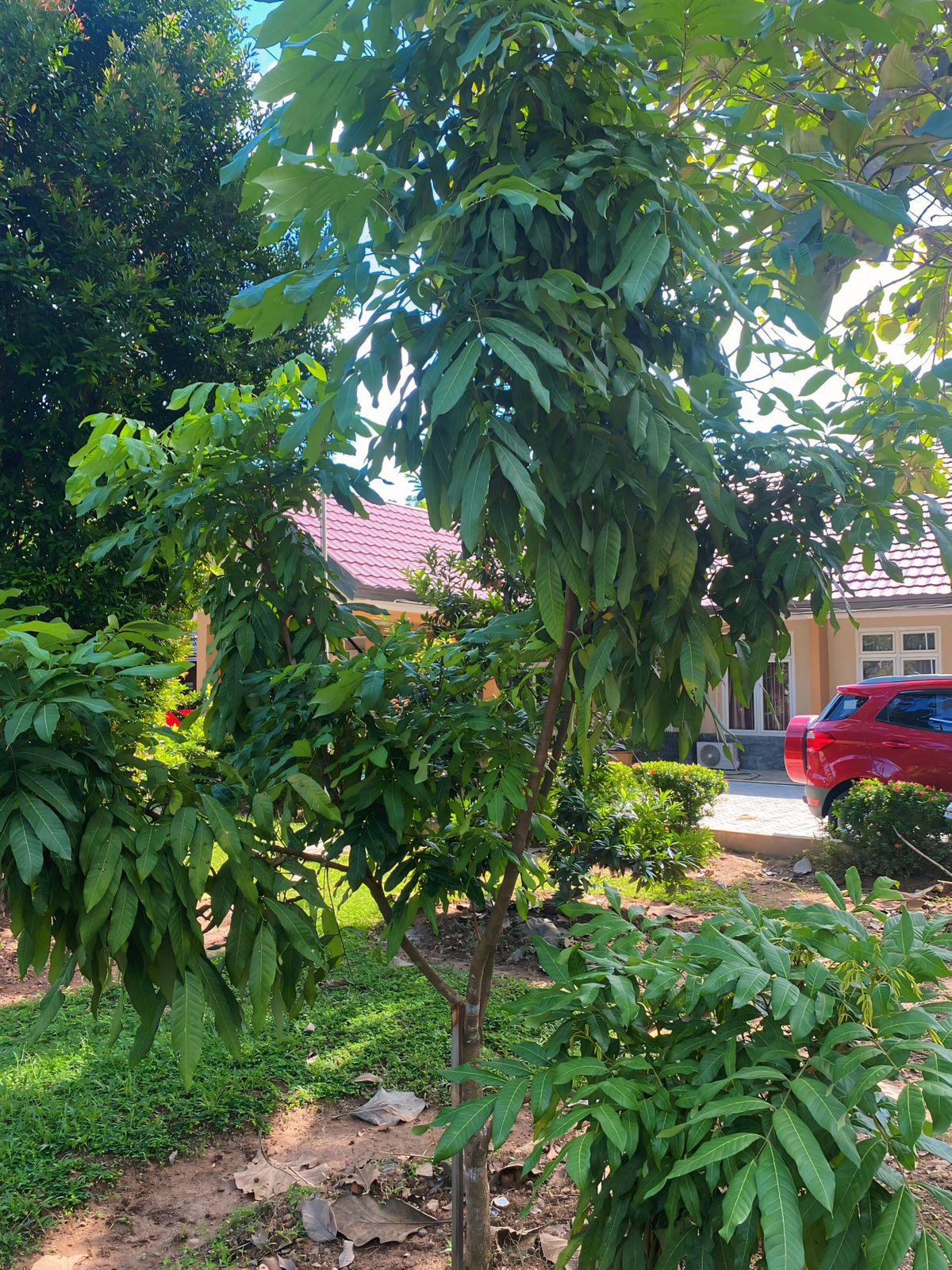Dimocarpus longan Lour., FI. Coch. (1790)
Famili : Sapindaceae
Spesies : Dimocarpus longan Lour., FI. Coch. (1790)
Lokal Name : lengkeng, kelengkeng, mata kucing, Ihau, Longan, Mahau, Takuhis
Description : Tree, up to 40 m tall and 1 m trunk diameter, sometimes buttressed, exceptionally a scandent shrub; branches terete with 5 faint grooves, sometimes warty lenticellate, rather densely ferruginous tomentose. Leaves 2-4(-6)-jugate, axial parts mostly densely hairy; petiole 1-20 cm, petiolules 0.5-35 mm long; leaflets elliptical, 3-45 cm x 1.5-20 cm, 1-5 times longer than wide, chartaceous to coriaceous, above often tomentose in basal part of midrib, beneath thinly tufted-tomentose mainly on midrib and nerves. Inflorescences usually terminal, 8-40 cm long, densely tufted-tomentose; cymules (1-)3-5-flowered; pedicels 1-4 mm; bracts patent, 1.5-5 mm long; flowers yellow-brown; calyx lobes 2-5 mm x 1-3 mm; petals 5, 1.5-6 mm x 0.6-2 mm, densely woolly to glabrous; stamens (6-)8(-10), filament 1-6 mm. Fruit drupaceous, 1-3 cm in diameter, lobe(s) broad-ellipsoid to globular, smooth to warty or sometimes up to 1 cm aculeate, sometimes granular, glabrescent, yellow-brown. Seed globular with shining blackish-brown testa; seed enveloped by a thin fleshy, translucent white arilloid.
Ecology : In undisturbed to slightly disturbed (open sites) mixed dipterocarp and sub-montane forests up to 1300 m altitude. Usually on hillsides and ridges. On sandy soils, but also on limestone. In secondary forests usually present as a pre-disturbance remnant or planted. Longan is a subtropical tree that grows well in the tropics but requires a prominent change of seasons for satisfactory flowering. A short (2-3 months) but cool (mean temperature 15¡ª22 degrees C) winter season brings out a prolific bloom; in this respect longan is less demanding and more predictable than lychee. From fruit set onwards high temperatures do not hamper development, but nights should not be warmer than 20-25 degrees C. Ample soil moisture is needed from fruit set until maturity; suitable annual precipitation is about 1500¡ª2000 mm. Longan thrives on rich sandy loams, it does well on oolitic limestone; moderately acid sandy soils are more marginal and on organic muck soils flowering is deficient, probably because shoot growth continues for too long. In northern Thailand longan orchards are often situated on the lighter soils along former river courses, a ribbon of trees winding between the sawahs. The roots grow down 2-4 m to the water table. The 'mata kucing' thrives in the humid tropical lowlands near sea level, within about 10 degrees from the equator. The trees occur mainly in the substage or understorey in primary or sometimes secondary forests. Rainfall ranges from 2500 mm to more than 4000 mm per year associated with a mean air temperature of 25-30 degrees C and a relative humidity of 65-95%. In Sarawak, the trees grow on alluvial soil, often on river banks. In other areas the trees grow on a wider range of soil types. A pH range of 4.5-6.5 is common in this region.

